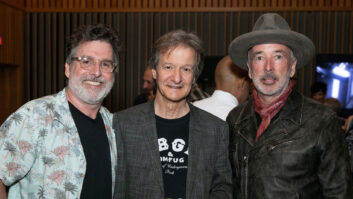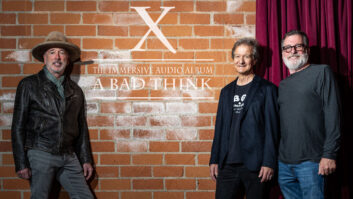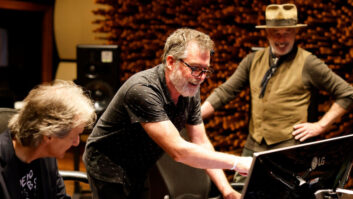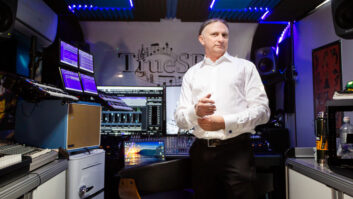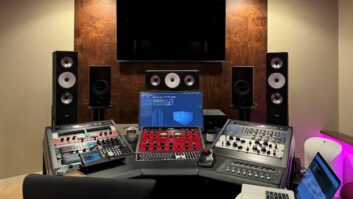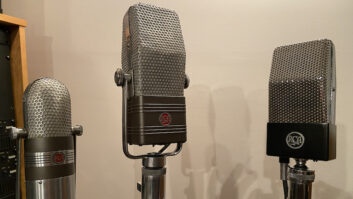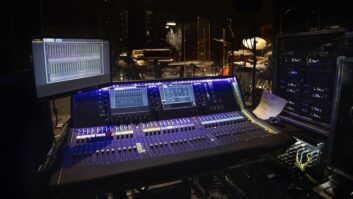The part of my job that excites me the most is when I come across new technologies and approaches that change the way I look at what I do, the gifts that make us all think again about how we approach our work and lives. I’ve written regularly about such discoveries, and recently I’ve come across some new approaches in production and manufacturing that surprised me and made me rethink what is possible.
This is Mix’s studio design issue, and many of you may be thinking about low-frequency handling in small spaces. Traditionally, you’d have to use large, repeatable bass traps that eat up precious space. In this issue, Barry Rudolph reviews the PSI Audio AVAA C20 Low-Frequency Active Acoustic Absorber. The 28-pound unit acts to control room modes between 15-120 Hz. It is 100-percent analog, can easily be turned on/off and moved into different spaces, and doesn’t emit a sound. Check out Barry’s review for more info and his experience with this new tech.
As studio owners, engineers and manufacturers we all recycle and manage AC and lights to make our workplaces green and affordable. But most of us, me included, think it’s impossible to go completely off the grid—unless you’re John La Grou. John is owner and designer at Millennia Music & Media Systems. If you’re not familiar, his company makes some of the best audio gear on the planet. This month, Millennia is moving to a new manufacturing facility sporting 48 solar panels. The rooftop rig is tied to the grid, 18.9-percent efficient and is planned to provide 100 percent of Millennia’s electrical needs. Lighting will be supplied by 17 high-bay, LED units (208 volts) throughout the building, using half the power of fluorescents and delivering 95 lumens per watt at 5,000 Kelvin. By comparison, an incandescent bulb delivers 15 lumens/watt. The HVAC is high end, too, using the latest Mitsubishi VRF technology that intelligently cycles between 10 percent and 100-percent duty as required. You go, John!
After talking to Jayson Tomlin, VP Business Operations, Minnetonka Audio, it made me rethink how we’ll all be sharing, instead of buying computers and software in the future. Ever heard of Amazon Web Services? Minnetonka is using this high-end cloud service to deliver computer power to users who wish to use Minnetonka’s AudioTools every once in a while instead of buying an expensive site license. Think of it as a computer time-share using Minnetonka AudioTools Cloud through AWS computing. First, you configure your rig, processing speed, and all the other goodies you’d normally have sucking power and putting out heat in your home/edit-suite/office. Then on a job-by-job basis, you’d upload a gig to the cloud to be processed by the AudioTool of your choice.
The example I was given was a company that just bought the foreign rights to broadcast a series here in the States, and needed to be sure that every episode complied with U.S. loudness standards. All of this could be uploaded to the cloud, and then the process (AudioTool) applied. You’d pay for just the processing, not the gear. Once bandwidth allows (wait for it…), there’s no reason we couldn’t all do our heavy lifting from a centrally shared computer—and with great speed. All it would take would be a simple Web-based upload interface driven from a smartphone, tablet—you name it—that would kick files from one server to the next. There’s no reason work could not be done from a screen and keyboard linking us to our virtual PC that we’d “rent/buy” with whatever features and software we wanted. These rigs could change daily depending on our workload and needs. Who needs hardware computers when they’re out there floating around waiting to be configured and used?
A few months back, I wrote about the DJI Osmo camera I’ve been using to create content. Recording audio is always a challenge with the Osmo as the onboard mic is awful; my next step is a wireless system. Gary Boss, Marketing Director at Audio-Technica, showed me a great new wireless rig that stacks the company’s System 10 to make a dual-channel, portable, hot-shoe mountable receiver so you can quickly record audio for wide shots and record in stereo, or use two lavs to film an interview with separate feeds, all directly to the camera.
Sennheiser has a different take using the MKE 440 that releases this month. It’s a V-shaped stereo shotgun designed to shape the incoming sound to the audio inside the visual frame of reference. The disadvantage with classic stereo recording (X/Y, M/S, A/B) is that it includes off-camera noise; the 440 eliminates sound out of the frame by design. The two shotguns are shock-mounted internally to reduce handling and wind noise. Pretty slick!
Rethinking isn’t just about our work but our loves, lives and those in our circle of family and friends. This last month was a tough one as I lost my best bud, Rex the Wonder Dog, who was suddenly called back to his home planet. On the same day, David Platillero, a student of mine, was riding his bicycle home from class and was hit by a distracted driver. Among David’s injuries is a back broken in two places leaving him without the ability to walk for the rest of his life. The point is, the Universe has a way of challenging us and making us rethink our lives, so don’t take anything for granted. Tell those around you how much you value their love, friendship, and having them in your life—you never know when things will change.
